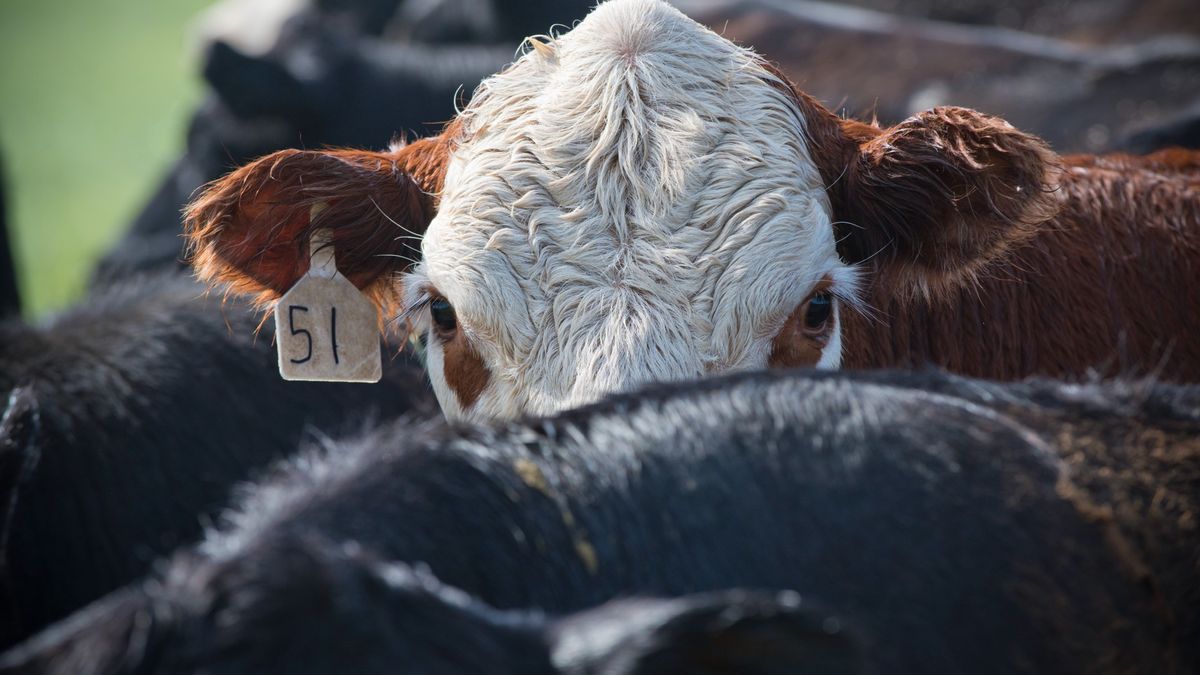An outbreak of naturally occurring anthrax has killed at least 50 animals, including cattle and a moose, in Wyoming.
In a statement released Sept. 3, the Wyoming Livestock Board confirmed that “multiple beef herds” in Carbon County, near Elk Mountain, had contracted anthrax — the first confirmed cases of the disease in Wyoming cattle since the 1970s. The same day, in a statement on its website, the Wyoming Game and Fish Department confirmed a case of anthrax in a dead moose in Carbon County. It has been almost 70 years since an anthrax case in wildlife has been reported in the state, department officials wrote.
Speaking to local outlet Cowboy State Daily on Sept. 4, State Veterinarian Dr. Hallie Hasel confirmed that the anthrax cattle outbreak had killed “approximately 50 to 60” animals. She added that the outbreak is currently “localized” but that investigations are ongoing.
Here’s what we know about the anthrax outbreak so far.
Related: ‘Zombie’ anthrax outbreak in Siberia: How does it kill?
What is anthrax?
Anthrax is an infectious disease that is caused by the spore-forming bacterium Bacillus anthracis.
The bacteria are found naturally in the environment worldwide. Their spores can remain dormant for decades, occasionally causing outbreaks that are more likely after periods of heavy rain or flooding following a drought. Militaries around the world began developing the bacterium as a biological weapon about a century ago, and it has occasionally been used in terrorist attacks, such as the 2001 mailing of anthrax spores through the U.S. postal system.
How is anthrax transmitted?
Anthrax most commonly affects livestock and wild animals — such as cattle, sheep and deer — which get the disease after breathing in or ingesting spores from contaminated soil, plants or water.
In rare circumstances, humans can become infected with anthrax — for instance, if they are exposed to infected animals or contaminated animal products, such as wool, bone or hair. During the 2001 anthrax attacks, 22 people were infected with anthrax and five died.
There are four types of anthrax, named according to how B. anthracis spores enter the body. Cutaneous, or skin-related, anthrax occurs when B. anthracis spores enter the body through a cut or scratch on the skin. If B. anthracis spores are inhaled, the bacteria can infect the lungs and cause inhalation anthrax.
Gastrointestinal anthrax is caused by ingesting B. anthracis spores. It can also be caused by consuming meat from animals infected with anthrax, or potentially from the animals’ milk, if they keep producing milk during infection. Products from anthrax-infected animals are prevented from entering the commercial food supply.
Cases of injection anthrax have been reported in heroin-injecting drug users in Europe. This is similar to cutaneous anthrax, but the infection begins deeper under the skin or muscle where a drug has been injected.
So far, human-to-human transmission of anthrax has not been reported.
What are the symptoms of anthrax?
Symptoms of anthrax in humans differ depending on the type of infection. Cutaneous anthrax usually causes itchy, small blisters or bumps on the skin, which may develop into painless sores, or ulcers, with black centers. In injection anthrax, these sores develop deep under the skin or in the muscle where the drug was injected.
Inhalation and gastrointestinal anthrax share many symptoms, such as fever, chills and nausea. However, inhalation anthrax may also cause chest pain and shortness of breath, while gastrointestinal anthrax can trigger swelling of the neck or neck glands.
Anthrax symptoms usually develop between one and seven days after exposure, but they may take up to two months to appear. The clinical signs of anthrax in livestock include sudden death, weakness, staggering and difficulty breathing.
Related: Worst anthrax outbreak in decades strikes farms in France
How is anthrax treated?
All types of anthrax can be fatal if untreated. However, anthrax can be treated with antibiotics. There is also an effective vaccine available for high-risk individuals ages 18 to 65, such as those who work with potentially infected animals or related products or in labs that handle B. anthracis.
Should people be concerned about anthrax?
Anthrax is rare in developed countries such as the U.S. because of human and animal vaccination programs. Gastrointestinal anthrax, for instance, has never been reported in the country, while only one to two cases of the most common type of the disease, cutaneous anthrax, are reported annually.
The Wyoming Livestock Board is working with producers and veterinarians to limit human exposure in the current outbreak, the board noted in a statement. The Wyoming Game and Fish Department will monitor the outbreak in wildlife, the department said in a separate statement.
While human cases are rare, anyone who thinks they’ve been exposed to anthrax-infected animals should contact the state’s health department and seek medical attention, according to the Wyoming Department of Health.
This article is for informational purposes only and is not meant to offer medical advice.
Ever wonder why some people build muscle more easily than others or why freckles come out in the sun? Send us your questions about how the human body works to [email protected] with the subject line “Health Desk Q,” and you may see your question answered on the website!

